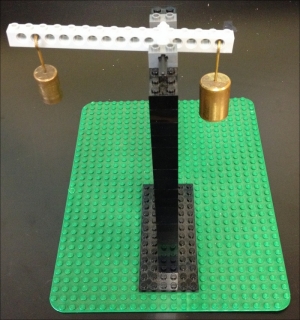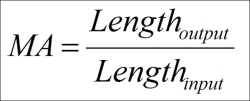In this chapter, we will build and program several models to demonstrate the basic principles of mechanical design. We will:
- Explore the idea of mechanical advantage
- Learn how you can increase either speed or torque using different combinations of gears
- Build gearboxes with motors
- Use the spur gears, beveled gears, and worm gears
- Write a program to spin the motors a set number of rotations
- Use the display on the EV3 brick
All of the models in this chapter can be built with both the EV3 Home Edition and EV3 Educational Edition kits.
When designing a robot, sometimes we may want to build a fast robot that needs to get to its objective quickly. At other times, we may want a powerful robot. For instance, maybe the robot needs to push a heavy object, push another robot, or climb a steep hill. When it comes to a robotic arm, we might be trying to lift a heavy object slowly or lift a small object quickly.
However, we cannot have both speed and power. There is a trade-off here—if you increase one, you decrease the other. This trade-off is called the law of conservation of energy.

LEGO bricks allow us to use several types of simple machines. The simplest would be the lever arm. You can easily create a lever with LEGO beams and pins. To balance a seesaw or a lever, the amount of torque or rotational force must be the same on either side of the seesaw. In the preceding image, we see a LEGO balance with unequal forces but equal lever arms. The longer the lever arm, the less force we need to rotate the lever. In the following image, we have doubled the length of the lever arm on the left but the mass is only half the size.

We define the mechanical advantage using Archimedes' Law of the Lever. The mechanical advantage is the length of the longer lever divided by the length of the shorter lever. The lever in the preceding image has a mechanical advantage of 2 because we have doubled the length.

A longer lever arm will increase our mechanical advantage. If the mechanical advantage is greater than 1, the output of our machine will have an increase in force over the input.
The Home Edition of the EV3 kit comes with rubber bands, which can be used in a pulley system. In the LEGO MINDSTORMS kits, the most common way to increase your mechanical advantage is by using gears. We can assemble two or more gears together in what is called a gear train. The teeth of gears will mesh together. We can define the mechanical advantage in a gear train by the number of teeth, N, on each gear.

If the number of teeth on the output gear is greater than the number of teeth on the input gear, the mechanical advantage is greater than one. This will result in more torque or rotational force on the output of our gear train. However, the rotational speed, ω, decreases in the same ratio as torque increases.

